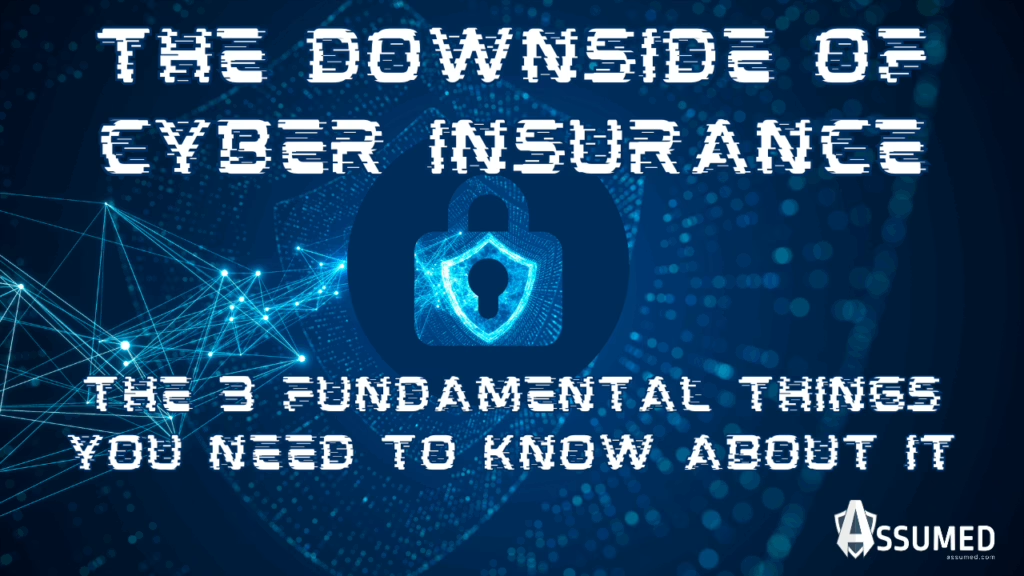Cyber insurance has become a vital piece for businesses that handle consumer data, providing financial protection against cyberattacks and data breaches. With the rise in regulatory scrutiny, companies rely on insurance to mitigate potential losses from security incidents. However, the downside of cyber insurance is that, by itself, it is insufficient, and it often comes with certain limitations. Cyber insurance is not a fix-all. Understanding these shortcomings can help businesses push their risk management strategies beyond relying solely on an insurance policy.

Table of Contents
The Benefits of Cyber Insurance
For companies that process and store consumer data, cyber insurance provides a safety net in the event of incidents such as ransomware attacks, data breaches and business interruptions resulting from cyber threats. Some benefits include:
- Coverage for financial losses related to data breaches.
- Legal expense reimbursement for regulatory investigations.
- Access to cybersecurity professionals for incident response.
- Liability coverage for claims related to data exposure.
While these benefits are undeniably valuable, cyber insurance is far from a comprehensive solution. Businesses cannot rely solely on their policy to cover all cybersecurity risks.
The Downside of Cyber Insurance
1. High Costs
One downside of cyber insurance, is that premiums have skyrocketed due to the increasing frequency of cyberattacks. Companies with weak cybersecurity measures may face even higher costs or exclusions in coverage, making it expensive to maintain a policy.
2. Limited Coverage
Many policies contain exclusions that can leave businesses vulnerable even after paying hefty premiums. For instance, cyber insurance may not fully cover:
- Regulatory fines from laws like TCPA and CCPA.
- Nation-state attacks or cyber warfare claims.
- Internal negligence and insider threats.
- Long-term business losses from reputational damage.
3. Complexity & Confusion
Another downside of cyber insurance is that policies are not standardized, and terms vary widely across providers. Businesses must carefully read policy fine print to understand coverage limitations, especially regarding regulatory violations like TCPA and CCPA compliance liabilities. Unfortunately, policies often lack clarity on whether regulatory fines are covered or excluded from coverage.
The 3 Things You Need to Know About Cyber Insurance
1. Cyber Insurance is Complex
Understanding the coverage details, exclusions, and cost factors requires in-depth knowledge and expertise. Businesses need to work closely with insurance providers to make sure the policies they receive align with their cybersecurity risks.
2. Cyber Insurance is Necessary
Despite its shortcomings, cyber insurance is an important component of a company’s risk management strategy. It provides financial support in major security incidents but should be combined with proactive cybersecurity measures.
3. Cyber Insurance is More Effective with the Right Tools
Businesses must augment insurance coverage with robust security solutions like:
- MDR (Managed Detection & Response) to monitor and respond to cyber threats.
- EDR (Endpoint Detection & Response) for advanced endpoint protection.
- Encryption technologies to secure data at rest and in transit.
- Data leak monitoring and vetting tools, such as Assumed Seeds, for third-party risk management, partner vetting, and data leak monitoring.
These additional security layers reduce cyber insurance costs and strengthen a company’s defenses against evolving threats. Being proactive and building up your security practices reduces the downside of cyber insurance.
Cyber insurance provides critical financial protection, but it is not a silver bullet for risk management. Businesses must adopt a multi-layered cybersecurity approach, combining insurance coverage with policies, procedures and technology to maximize resilience.
Rather than relying solely on an insurance safety net, companies should invest in security tools, employee training, and third-party risk management solutions to proactively minimize cyber risks.
Want to discuss how to strengthen your cybersecurity framework beyond insurance? Here are the top tools and strategies for effective risk management.


